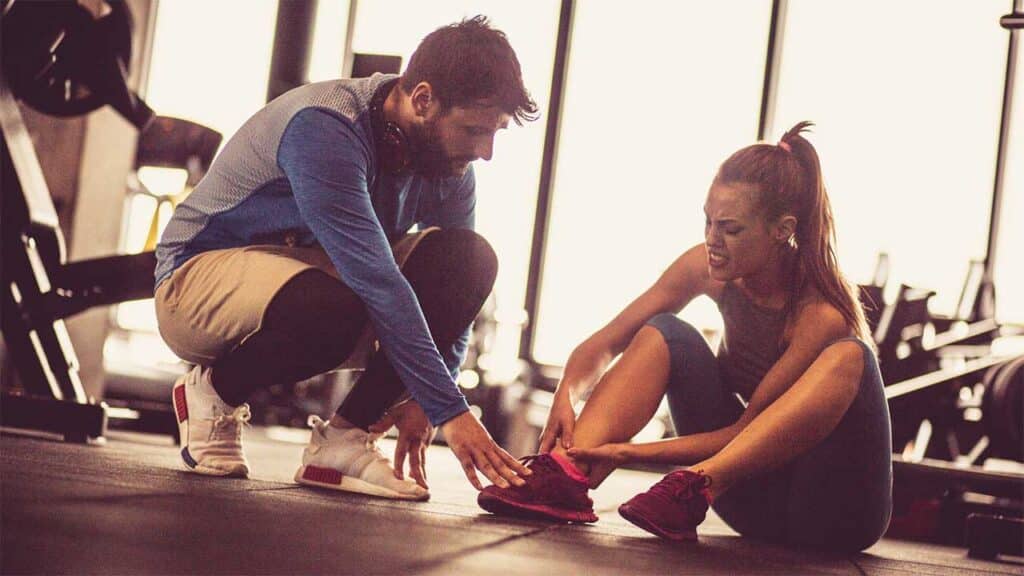Recovery plays a key role in athletic performance and injury prevention. When you push your body during workouts or sports, your muscles need time to repair and rebuild.
Proper recovery techniques can help you bounce back faster, avoid getting hurt, and perform better.
Taking care of your body after exercise is just as important as the workout itself. This article will cover 10 useful tips to help you recover smarter.
These tips can benefit athletes of all levels, from weekend warriors to pros. By adding some simple recovery habits to your routine, you can stay healthy and reach your fitness goals.
1. Warm-Up Exercises
Warm-up exercises are key to preventing injuries and boosting performance. They get your body ready for physical activity.
Start with light aerobic movements. This raises your heart rate slowly. You can jog in place or do jumping jacks for a few minutes.
Next, do some dynamic stretches. These are moving stretches that warm up your muscles. Try arm circles, leg swings, and torso twists.
Focus on the muscles you’ll use in your workout. If you’re going for a run, do leg swings and high knees. For upper body workouts, do arm circles and shoulder rolls.
Gradually increase the intensity of your warm-up. This prepares your body for the main workout. You can do light versions of your planned exercises.
Don’t forget to warm up your core. Planks and gentle twists are good options. A strong core helps protect your back during exercise.
Aim for 5–10 minutes of warm-up time. This is enough to get your body ready without tiring you out. Listen to your body and adjust as needed.
Remember, warming up is not the same as stretching. Save static stretches for after your workout. They’re better for cooling down and improving flexibility.
2. Strength Training
Strength training is a key part of recovery and injury prevention. It helps build muscle and makes your body more resistant to stress.
You should do strength training 2-3 times a week. Focus on exercises that work multiple muscle groups at once. Squats, deadlifts, and bench presses are good choices.
Start with light weights and proper form. Gradually increase the weight as you get stronger. This helps avoid injuries from lifting too much too soon.
Rest between sets is important. It lets your muscles recover and helps you lift more overall. Aim for 1-2 minutes of rest between sets.
Don’t forget to train your core. A strong core helps protect your back and improves your balance. Planks and ab exercises are great for this.
After strength training, your muscles need time to repair. Give each muscle group at least 48 hours of rest before working it again. This lets you get stronger without risking injury.
Proper nutrition supports muscle growth and recovery. Eat protein-rich foods like chicken, fish, or beans after your workout. This gives your body the building blocks it needs to repair muscle tissue.
Stay hydrated during and after strength training. Water helps your muscles work better and aids in recovery. Drink water before, during, and after your workout.
3. Proper Hydration
Staying hydrated is key for your recovery and performance. Water helps your muscles work better and keeps your joints healthy. It also helps prevent cramps and fatigue during exercise.
Before you work out, drink 16–20 ounces of water about 2–3 hours ahead. Then have 8–10 ounces 10–20 minutes before you start. This gives your body time to absorb the fluid.
During exercise, aim to drink 7–10 ounces every 10–20 minutes. If you’re working out for more than 90 minutes, try a sports drink with electrolytes. These replace the salts you lose through sweat.
After your workout, drink 16 ounces of water within 30 minutes. This helps replace what you lost and starts the recovery process. Keep drinking water throughout the day to stay hydrated.
Everyone’s needs are different. Pay attention to how you feel and adjust your intake as needed. If you’re thirsty, drink more. Your urine should be pale yellow – if it’s dark, you need more fluids.
Proper hydration isn’t just about exercise. It helps your overall health and mental performance too. Try adding an extra glass or two of water to your daily routine. Your body will thank you.
4. Balanced Diet
A balanced diet is key for injury prevention and fast recovery. You need to eat a mix of foods that give your body the right fuel.
Protein helps build and repair muscles. Good sources are lean meats, fish, eggs, and beans. Aim for some protein at each meal.
Carbs give you energy. Choose whole grains, fruits, and veggies. They also have vitamins that help healing.
Healthy fats are important too. Nuts, seeds, and fish contain omega-3s that can reduce swelling. Don’t forget calcium for strong bones. Dairy products or leafy greens are great options.
Stay hydrated by drinking water throughout the day. This helps your muscles work better and recover faster.
Eat regularly to keep your energy up. Small, frequent meals can be better than large ones. Listen to your body. If you’re extra hungry after a tough workout, you may need to eat a bit more.
Try to get nutrients from real foods first. Supplements can help fill gaps, but whole foods are best. A balanced diet supports your training and helps you stay injury-free. It’s a key part of any recovery plan.
5. Rest and Recovery
Rest and recovery are key for athletes and fitness enthusiasts. Your body needs time to repair and rebuild after tough workouts.
Taking regular rest days helps prevent injuries. It gives your muscles, tendons, and ligaments a chance to heal. Without enough rest, you risk overtraining and burnout.
Active recovery can boost your performance. This means doing light exercise on rest days. It increases blood flow to sore muscles. Good options include gentle yoga, swimming, or walking.
Sleep is crucial for recovery. Aim for 7-9 hours each night. Quality sleep helps your body produce growth hormone. This repairs tissue damage from exercise.
Hydration plays a big role in recovery, too. Drink plenty of water throughout the day. This helps flush out waste products from your muscles.
Proper nutrition supports recovery. Eat a balanced diet with lean protein, complex carbs, and healthy fats. These nutrients help rebuild muscle and restore energy.
Listen to your body. If you feel extra tired or sore, take an extra rest day. Pushing too hard can set back your progress.
Remember, rest is when your body gets stronger. It’s not wasted time. It’s an essential part of your training plan.
6. Stretching Routines
Stretching routines are key for keeping your body flexible and injury-free. You should do stretches after warming up or after your workout.
Start with a few simple stretches. Hold each one for 15–30 seconds without bouncing. Breathe normally as you stretch.
Try a doorway chest stretch. Stand in a doorway with your arms out to the sides. Step forward until you feel a stretch in your chest and shoulders.
For your lower back, lie on your stomach. Push your upper body up with your hands. This will stretch your back muscles gently.
Don’t forget your legs. Sit on the floor and reach for your toes to stretch your hamstrings. For your calves, lean against a wall with one leg back.
Mix dynamic and static stretches in your routine. Dynamic stretches involve movement, while static stretches are held in place.
Remember to stretch both sides of your body equally. This helps keep you balanced and prevents muscle imbalances.
If you’re not sure how to stretch safely, ask a trainer or physical therapist. They can show you proper form to avoid injury.
7. Mindfulness Meditation
Mindfulness meditation can help you recover and avoid injuries. It teaches you to focus on the present moment. This helps you tune into your body’s signals.
You can start with short sessions. Sit quietly and pay attention to your breathing. Notice any sensations in your body without judgment. This builds body awareness.
Regular practice may reduce stress and anxiety. Less stress means your muscles can relax more easily. Relaxed muscles are less likely to get injured.
Mindfulness can also improve your focus during training. Better focus leads to proper form and technique. This decreases your injury risk.
Some athletes use guided meditations. These can help you visualize healing and peak performance. Try listening to recordings before or after workouts.
You might find it helpful to join a group class. Learning from others can boost your motivation to keep practicing. Many gyms now offer mindfulness sessions.
Remember, consistency is key. Even 5–10 minutes a day can make a difference. Start small and build up your practice over time.
8. Cross-Training Activities
Cross-training can be a game-changer for your fitness routine. It helps prevent injuries and boosts your overall performance. By mixing up your workouts, you give overused muscles a break while strengthening others.
Swimming is an excellent, low-impact option. It works your whole body without stressing your joints. The water resistance provides a challenging workout that improves your endurance.
Cycling is another great choice for cross-training. It builds leg strength and cardiorespiratory fitness. You can do it outdoors or on a stationary bike, making it convenient for any weather.
Yoga helps improve flexibility and balance. It also teaches proper breathing techniques that can benefit your main sport. Many athletes find yoga helps with mental focus too.
Strength training is crucial for injury prevention. It builds muscle and bone density. Focus on exercises that target your core, legs, and upper body for a well-rounded workout.
Rowing machines offer a full-body workout. They build upper body and core strength while also improving your cardiovascular fitness. This makes rowing ideal for many athletes.
Remember to choose activities you enjoy. This makes it easier to stick with your cross-training routine. Mix and match different exercises to keep things interesting and challenge your body in new ways.
9. Foam Rolling
Foam rolling is a great way to help your muscles recover and prevent injuries. It’s like giving yourself a massage with a special foam tube.
You can use a foam roller on many parts of your body. Try rolling your legs, back, and arms. Go slow and steady as you move the roller.
When you find a sore spot, stop there for a few seconds. This helps loosen up tight muscles. Don’t roll too hard – it should feel good, not painful.
Foam rolling before and after exercise can be helpful. It warms up your muscles and helps them relax afterwards.
You can foam roll for about 1-2 minutes on each body part. Do this a few times a week for the best results.
Remember to breathe normally while foam rolling. Stay relaxed and take your time. Your muscles will thank you!
10. Injury Prevention Gear
The right gear can help you avoid injuries and boost your performance. Foam rollers are a must-have tool. They help loosen tight muscles and improve flexibility. Roll your legs, back, and other sore areas before and after workouts.
Compression sleeves and socks are also useful. They increase blood flow to your muscles. This can reduce swelling and speed up recovery. Wear them during exercise or while resting afterward.
Proper footwear is crucial too. Choose shoes that fit well and match your activity. Running shoes are different from cross-training shoes. Make sure to replace them when they wear out.
Kinesiology tape can support weak areas. It helps stabilize joints and muscles. Apply it to trouble spots before intense workouts.
Don’t forget about protective gear. Helmets, knee pads, and mouthguards prevent serious injuries in contact sports. Always use the right protection for your activity.
A good water bottle keeps you hydrated. Dehydration can lead to cramps and fatigue. Drink plenty of water before, during, and after exercise.
Resistance bands are great for warming up. They help activate muscles and improve mobility. Use them before your main workout to prepare your body.
Importance of Proper Warm-Up
A good warm-up gets your body ready for exercise. It helps prevent injuries and boosts your performance. Let’s look at why warming up matters and how to do it right.
Benefits of Dynamic Stretching
Dynamic stretching is great for warming up. It involves moving your muscles and joints through their full range of motion. This type of stretching:
- It increases blood flow to your muscles
- Improves flexibility
- Enhances muscle power and performance
- Reduces injury risk
Try leg swings, arm circles, or walking lunges before your workout. These moves prepare your body for action and wake up your nervous system.
Recommended Warm-Up Techniques
Start with light cardio to raise your heart rate. A 5–10 minute jog or brisk walk works well. Then move on to sport-specific moves:
- For running: High knees, butt kicks, and skipping
- For weightlifting: Bodyweight squats, push-ups, and jump rope
- For swimming: Arm swings and leg swings
End your warm-up with some light static stretches. Hold each stretch for 10–30 seconds. This helps loosen up tight muscles and gets you ready to perform your best.
Remember to match your warm-up to your planned activity. A good warm-up preps your body and mind for exercise. It’s a key step in staying safe and reaching your fitness goals.
Enhancing Recovery Through Nutrition
Good food choices can speed up your healing and boost your performance. Eating the right nutrients and staying hydrated are keys to bouncing back quickly after workouts.
Key Nutrients for Muscle Repair
Protein is crucial for fixing damaged muscles. Aim for 1.4 to 2.0 grams per kilogram of body weight daily. Good sources include:
- Lean meats
- Fish
- Eggs
- Greek yogurt
- Beans
Carbs help refill energy stores. Eat 30–60 grams within 30 minutes after exercise. Try:
- Fruits
- Whole grains
- Sweet potatoes
Antioxidants fight inflammation. Add these to your meals:
- Berries
- Leafy greens
- Nuts
Role of Hydration in Recovery
Water is vital for all body functions. It helps:
- Flush out waste products
- Deliver nutrients to cells
- Keep joints lubricated
How much should you drink? Aim for clear or light yellow urine. This usually means:
- 8–10 cups per day for most people
- More if you’re very active or in hot weather
Sports drinks can help replace lost electrolytes during long or intense workouts. But for most exercises under an hour, plain water is fine.
Final Thoughts
Recovery is not just a break from training; it’s a vital component of any successful athletic routine.
By incorporating these recovery strategies into your regimen, you can prevent injuries, enhance your performance, and sustain long-term athletic success.
Remember, listening to your body and giving it the time and care it needs to heal will pay off in the long run. Consistency, proper nutrition, and mindful practices are the cornerstones of effective recovery, helping you reach your peak performance and maintain your athletic edge.






































